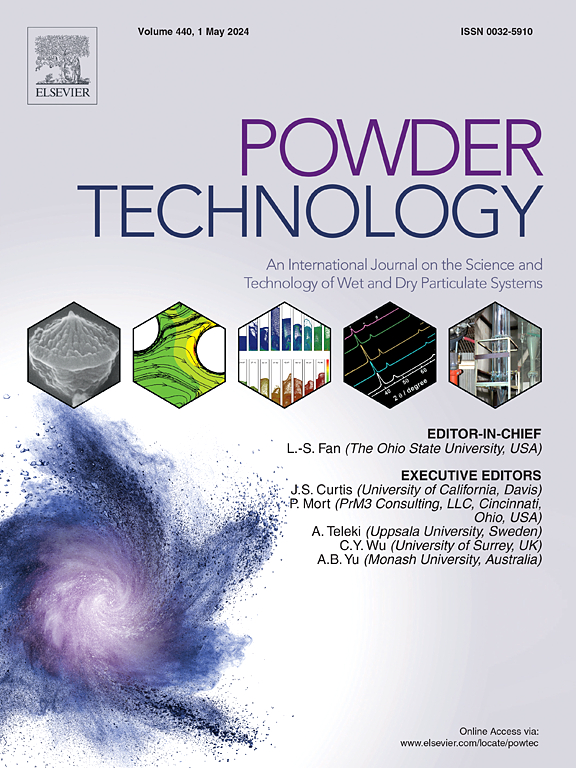Influence of substrate surface morphology on powder spreading in laser powder bed fusion process
IF 4.5
2区 工程技术
Q2 ENGINEERING, CHEMICAL
引用次数: 0
Abstract
Controlling the quality of the powder bed is critical for guaranteeing component quality in laser powder bed fusion (LPBF). In this work, the discrete element method is used to examine how substrate surface morphology, including the roughness and texture angle, affects powder bed quality. The results indicate that the bed quality is more sensitive to changes in surface roughness than texture angle. Powder coverage can be improved by increasing the texture angle. The force analysis reveals that on rough surfaces, the contact force acting on the substrate has strong fluctuations. The particle-substrate contact force under the piles has an increasing-decreasing trend with the distance from the scraper increasing. In addition, the in-situ re-coating technique at a proper gap increment can effectively fill the depressions generated from the rough surface, achieving more uniform and dense powder beds. The findings provide a theoretical basis for optimizing powder-spreading strategies in LPBF process.

激光粉末床熔合过程中基材表面形貌对粉末扩散的影响
粉末床质量的控制是保证激光粉末床熔合成形质量的关键。在这项工作中,采用离散元方法来检查基材表面形貌,包括粗糙度和纹理角,如何影响粉末床质量。结果表明,床层质量对表面粗糙度的变化比织构角的变化更敏感。增加织构角度可以提高粉末覆盖率。受力分析表明,在粗糙表面上,作用在基材上的接触力有很强的波动。桩下颗粒-基板接触力随离刮板距离的增加呈增减趋势。此外,适当间隙增量的原位重涂技术可以有效填充粗糙表面产生的凹陷,使粉末层更加均匀致密。研究结果为优化LPBF工艺的铺粉策略提供了理论依据。
本文章由计算机程序翻译,如有差异,请以英文原文为准。
求助全文
约1分钟内获得全文
求助全文
来源期刊

Powder Technology
工程技术-工程:化工
CiteScore
9.90
自引率
15.40%
发文量
1047
审稿时长
46 days
期刊介绍:
Powder Technology is an International Journal on the Science and Technology of Wet and Dry Particulate Systems. Powder Technology publishes papers on all aspects of the formation of particles and their characterisation and on the study of systems containing particulate solids. No limitation is imposed on the size of the particles, which may range from nanometre scale, as in pigments or aerosols, to that of mined or quarried materials. The following list of topics is not intended to be comprehensive, but rather to indicate typical subjects which fall within the scope of the journal's interests:
Formation and synthesis of particles by precipitation and other methods.
Modification of particles by agglomeration, coating, comminution and attrition.
Characterisation of the size, shape, surface area, pore structure and strength of particles and agglomerates (including the origins and effects of inter particle forces).
Packing, failure, flow and permeability of assemblies of particles.
Particle-particle interactions and suspension rheology.
Handling and processing operations such as slurry flow, fluidization, pneumatic conveying.
Interactions between particles and their environment, including delivery of particulate products to the body.
Applications of particle technology in production of pharmaceuticals, chemicals, foods, pigments, structural, and functional materials and in environmental and energy related matters.
For materials-oriented contributions we are looking for articles revealing the effect of particle/powder characteristics (size, morphology and composition, in that order) on material performance or functionality and, ideally, comparison to any industrial standard.
 求助内容:
求助内容: 应助结果提醒方式:
应助结果提醒方式:


